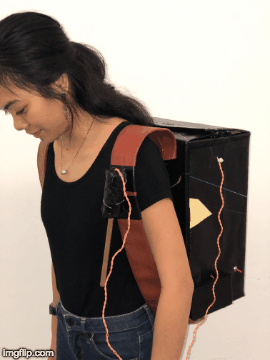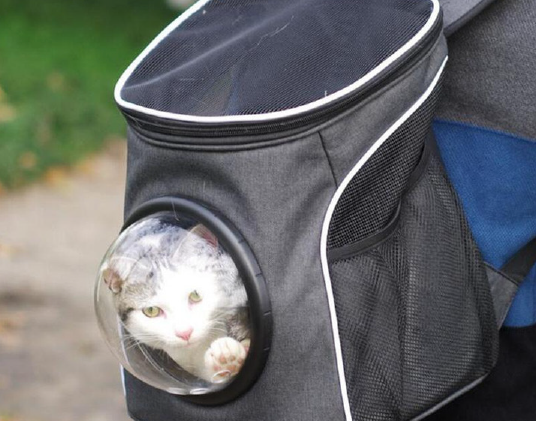Building our technology
When the world becomes add reliant instead of food reliant, the rescuers had to change too. Our R&D team spent 12 months developing the perfect rescuer wearable backpack.
The Storyworld
The year is 2068. Climate change and other environmental disasters had devastated the crops and the animals that used to eat them ten years prior.
In this new world, food did not exist. The governments around the world began to issue a substance called Blobs to act as sustenance for the average human body. These had neither flavor nor nutrients.

Scarcity and poverty
A mega corporation called ALKAN began manufacturing a product known as Additives or Adds. They could be added to the Blobs to give it both flavour and nutrients. The Adds are stored in vials which were sold at high prices to those able to afford them.
Eventually, the disparity began to show in the physical bodies of the poor as most of them lacked the nutrients they needed to live a better quality of life.
Creation of Rescuers

Hence a group was formed to aid those in need: The Rescuers. Comprising of individuals from all walks of life, the members worked together by going to stores that sold ALKAN vials imploring owners to give them the expired Adds that they were about to throw away.
Collecting these Adds that remained edible, they give these to the poor and those in need. This is their story.
Our Process
Our process combined research, experimenting, sketching, and a fail fast formula that enabled us to work and produce results as quickly as possible.

Our Practitioner
For the purpose of our project, we focused on the practice of Food Rescuers.
What is it?
Food rescuing embodies the notion of reducing food wastage. Rescuers often head into marketplaces or similar hubs where unsold food are often thrown out to "rescue" the produce and give them to the poor or those in need.
Our Design Fiction project took this practice and extrapolated it into our version of the future where food rescuing has become a tad different.
Primary Sketches
We somehow always knew that there would be two devices involved in the backpack. The real question was what it would entail...

The Backpack
The backpack is broken down into three major components:
-
The Frame
-
The Skinsensical
-
The Transmutator
Our team designed the backpack with the mindset that it would
become a wearable studio for food rescuers in the fictional year of 2068.
Familiar?
Our backpack's frame was inspired by the simple cat carrier bag! We liked the idea of the orb being clear and how we could see things through it (i.e. the Blobs).
The Frame
The skeleton of the backpack was made using a cardboard box. We cut out a hole at the center in order to fit the transmutator orb in. We also snipped out a compartment below which can be opened so that vials may be placed inside for the transmutation process to begin.
We wrapped the cardboard box with a more resilient material that would be able to withstand weather conditions such as rain (considering that the rescuers would often be outside performing their duties). The straps are made from a hard leather that is both durable and sturdy.
The SkinSensical
Inspired through function
The Skinsensical went through two variations before we finalized its final interation. All three variants included a touch capacitor, although the manner in which the Arduino code and method of touch was slightly different with all three.
The first variant was graphite-based, where touching the graphite would trigger the LED light. The second variant would also trigger a singular LED light, but this time through a copper film. Finally, the final variant utilizes an ADC Capacitive Touch through an extended rod which was more congruent to our vision of the product. Furthermore, we also used NeoPixels to show how it "processes" the touch, before landing on a color to determine the type of Additive the person needs.
Our inspiration comes from the thermometer used to
measure body heat, but in our case, our sensor tells
us if the rescuee is lacking a certain type of nutrient
To simulate the flowing action of the vials' liquids entering the Transmutator to transform the Blobs, we added a pump which would loop liquids into itself .
The Transmutator
To create the illusion of "transformation", we decided to implement a function inspired through a magic trick. A servo is attached to a piece of grey cardboard material split into two platforms which will hold two versions of the Blob, the grey one which has not been transformed, and one that has changed colour. When the signal is given, the cardboard acts as a 'revolving door' which will transform a boring grey blob into a colored blob!
The 'Magic Show' Function
Proximity Sensor
The Pump
We set up a proximity sensor in order to use motion as the signal which would trigger the switch to happen for the 'Magic Show' function. Adjusting for the distance was trickier than we expected but the result was exactly what we wanted. At about an arm's length, the sensor will trigger the servo to rotate hence activating the 'revolving door'
Additional Notes
For our full exhibition, we included actual smells that were added into the Add vials, to simulate the actual behavior and practice of food rescuing as part of the experience.
We also made a list of flavours where participants would have to correctly guess that the nutrient the rescuee actor needed was chicken soup based on the results of the Skinsensical.



















